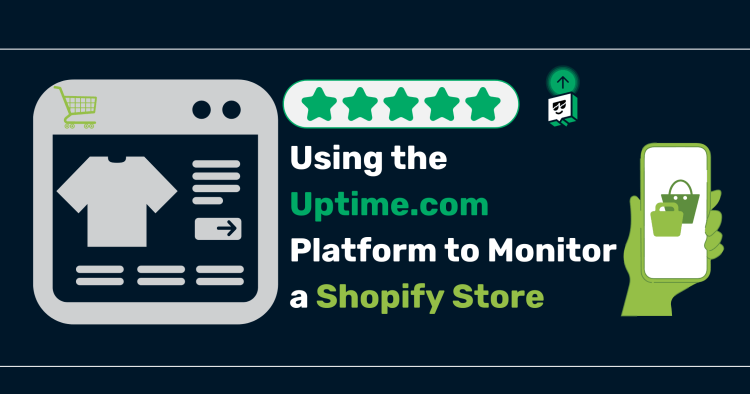
Using the Uptime.com Platform to Monitor a Shopify Store
For Shopify store owners, there are few things more important than ensuring that the online storefront is always available to customers. If your Shopify store is inaccessible to customers, missed sales opportunities and frustrated customers are almost a guarantee. Uptime.com’s platform provides customizable monitoring services for your most crucial URLs and customer journeys that ensure you are alerted to downtime as soon as it’s detected, enabling you to address issues before they have a significant impact on your business. This also informs you about issues that can be proactively addressed to mitigate future downtime events.
Uptime.com Checks for Monitoring a Shopify Store
Uptime.com offers many monitoring solutions. When using the service to monitor a Shopify store, three check types are especially helpful for ensuring the availability of your Shopify store: HTTP(S) checks, Transaction checks, and SSL Certificate checks.
HTTP(S) Checks
HTTP(S) checks are one of the most basic check types that Uptime.com offers, but also one of the most useful. These checks ping a specific web address, or URL, at a 1-minute interval (or any interval of your choosing, up to 60 minutes) to verify the availability of your store.
Uptime.com’s probe servers will send a request to the URL of your Shopify webstore to check that it returns an “OK” response. If an error code is returned, you will be immediately alerted via the methods you choose—email, SMS, voice call, and push alerts through the mobile app notification. This up-to-the-minute alerting ensures that any downtime is communicated as quickly as possible so that it can be addressed.
Transaction Checks
Transaction checks, also known as synthetic monitoring, simulate a user’s journey through a specific process on your Shopify store. Some common workflows that can be monitored through transaction checks include logging in to your store and checking out with a product. These checks mimic user interactions and send alerts when any step in the workflow fails. Errors along the user journey mean missed sales and opportunities, so transaction checks are an invaluable tool in making sure your users can get things done on your Shopify store.
SSL Certificate Checks
A Shopify store, like many other websites, has numerous points of failure. DNS records and SSL certificates may be incorrect or expired, which causes your customers to see the dreaded “untrusted site” error message when viewing your store. With over 125 probe servers in 57 countries, Uptime.com offers worldwide monitoring that ensures coverage no matter where you’re located.
The Uptime.com Advantage
While Shopify offers a great webstore and checkout experience, we’ve found that a bit more granularity in monitoring is helpful from the perspective of a store owner. Shopify does offer a status page that can be used to check on the availability of the platform as a whole, but unfortunately doesn’t offer status pages or monitoring for individual stores.
This means that while you can check on the health of Shopify’s overall services, your webstore may experience downtime or accessibility problems that aren’t communicated through the overall Shopify status page. Using Uptime.com’s monitoring checks and Status Page tool can offer greatly increased insight and reporting into the availability of your individual store, offering a level of granularity that isn’t possible with Shopify’s built-in tools.
A Note on User-Agents
Shopify has implemented security policies through their web application firewall (WAF) that may block requests originating from certain user-agents, which are used to identify internet traffic. If you notice unexpected behavior from an HTTP(S) check that is monitoring your Shopify store, such as receiving downtime alerts even though the page appears to be accessible through your browser, we suggest using a custom user-agent to ensure that traffic is not blocked.
This can be achieved under the Optional settings for your HTTP(S) check. Enter a custom user-agent to be sent in the HTTP Headers field:
The user-agent should be entered into the field in regular HTTP format. For example, a custom user-agent can be named after your store or a product, such as “shopname” or “yourdomain”:
User-Agent: mystoremon
For more thorough information and a demonstration of how Uptime.com checks can add an invaluable layer of availability monitoring to your Shopify store, please see the video below!
Minute-by-minute Uptime checks.
Start your 14-day free trial with no credit card required at Uptime.com.
 Uptime.com Blog
Uptime.com Blog


